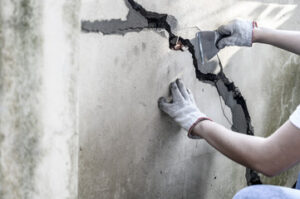Wood tugged at audiences’ hearts in small roles like the orphan in Splendor in the Grass and the modern romance Love with a Proper Stranger. In 1961 she starred as Maria in the film adaptation of West Side Story.
On the night of her death, Wood had dinner at Doug’s Harbor Reef restaurant in Two Harbors and then returned to her yacht, called Splendour. She, Wagner, and Walken drank and argued. Keep reading the article below to learn more about Natalie Wood.

Born in San Francisco
In an era when child actors were often used for stereotypes, Wood stood out as a talented and serious actress. She had a number of film hits, including the Christmas classic Miracle on 34th Street. She also starred in the musical West Side Story and received two Academy Award nominations.
Wood was born Natalia Nikolaevna Zacharenko in San Francisco on July 20, 1938, to Russian immigrant parents. Her acting career began at age four with a brief role in the 1943 film Happy Land. She was cast in another film the following year and was soon a regular child star, appearing in more than 20 films in her young life.
At age 16, Wood appeared in her first mature movie role, as Judy in Rebel Without a Cause. Her performance earned her a best supporting actress nomination, and it marked a turning point in her life. Her former “childlike sweetness” was beginning to combine with a restlessness that she expressed through her rebellions and romantic infatuations, writes Tibbetts.
Wood continued to show her range of acting styles in films such as The Searchers and Marjorie Morningstar. In both, she played characters with strong personalities and a sense of independence that were reminiscent of her own rebellious spirit. In 1961, she starred in Jerome Robbins’s box office hit West Side Story. Tibbetts suggests that the film mirrored her own struggle to break free of the restrictions placed on her as a child star.
During this time, Wood married three times and had two children. She had a daughter with producer Richard Gregson and a son with actor Robert Wagner, both of whom she later divorced. In 1973, she remarried and had a daughter named Courtney.
Throughout her life, Wood worked on several television projects and made appearances in a handful of theatrical films. She remained active in acting even after retirement from movies, but she focused more on her home life and family after her divorces. She died in Los Angeles in 1981 at the age of 62. She left behind an enormous body of work and a lasting legacy of talent.
Died in a boating accident on Catalina Island
In November of 1981, Natalie Wood was found dead in the waters off California’s Catalina Island. She had been spending Thanksgiving weekend aboard her husband’s yacht Splendour, with her co-star Christopher Walken and the boat’s young captain, Dennis Davern. The actress had been drinking heavily with the two men and seemed to be flirting with Walken. At some point, the group left for dinner in Doug’s Harbor Reef restaurant. The boat returned around 10 p.m., and at 10:30 p.m., Wood went to the master cabin. Wagner noticed that she wasn’t there and went up on deck to look for her. When she didn’t return, he called the local Harbor Patrol for help. Authorities eventually discovered her body floating in the water a mile away from the Splendour, near a small Valiant-brand inflatable dinghy that had been beached nearby. The Los Angeles County Coroner ruled her death a result of accidental drowning. His report noted that superficial bruising and claw marks were present on her body, but he concluded that the dinghy had been towed into the water after she fell out of it and that her exhaustion was the cause of her death.
For decades, the case was considered a closed matter. However, in recent years, doubts have been raised about the initial ruling of accidental drowning. The chief reason for this is that Dennis Davern has been consistently vague and inconsistent in his testimony. He has told varying stories to various people, including reporters and tabloids, over the years.
Davern has always insisted that Wood simply slipped and fell into the water, but he’s also left out key details about what happened. Moreover, he doesn’t explain why he didn’t tell police investigators his version of events in the days after the tragedy.
Wood was a popular film and television star, known for her roles in Miracle on 34th Street, West Side Story, Rebel Without a Cause, and Brainstorm. She retired from acting in the late ’70s to become a stay-at-home mother, but she continued to appear in a few theatrical films and television shows before her death.
Married three times
Natalie Wood was a gifted actress, but her personal life was full of skeletons. She was married three times and had two children with different husbands. She was a popular star in the 1940s and 1950s. Her films like Rebel Without a Cause and The Searchers showcased her widening range of acting styles. But after the box office flop All the Fine Young Cannibals, her career began to lose momentum.
After her divorce from Wagner, she found love with producer Richard Gregson. They married in 1969 and had a daughter, Natasha. But their marriage ended in divorce in 1972. Wood then went back to her first husband, who was now a widower. They had another daughter, Courtney, together.
Wood’s Russian heritage was a major part of her personality. Her mother was a gypsy and her father was a carpenter from Ussuriysk, where she was born. Her parents met in Russia before moving to San Francisco. The family was raised as Russian Orthodox Christians. Wood had an extensive knowledge of both English and Russian, and she spoke the latter with a slight accent.
In her films, she often played teenage characters with big dreams. Her roles in films such as Marjorie Morningstar and Inside Daisy Clover showed her versatility and ability to portray teenagers. Her acting skills improved with time, and she gained more mature roles in the early 1960s.
Director Sydney Pollack praised her as an “absolutely superb actress.” He said she had the ability to convey a great deal of emotion with very few lines of dialogue. But he warned her that she would eventually be typecast in the role of a pretty girl with big dreams. He suggested that she try to take more challenging material.
Film historian John C. Tibbetts wrote that after the success of Miracle, Wood took on more roles as daughters in family movies. She played Fred MacMurray’s daughter in Father Was a Fullback and Dear Brat, Margaret Sullavan’s daughter in No Sad Songs for Me, and Joan Blondell’s daughter in The Jackpot.
The Los Angeles County sheriff’s department is taking a second look at Wood’s nighttime drowning on the yacht with Wagner and actor Christopher Walken off Catalina Island in November 1981. The initial investigation of the incident was inconclusive.
Died of a heart attack
Natalie Wood’s death in 1981 was a heartbreaking blow for fans. She was one of Hollywood’s most beloved stars and had become a household name with her roles in Splendor in the Grass and West Side Story. In her later years, she had struggled to make a comeback after two of her films failed and her marriage with actor Robert Wagner fell apart. She was on the verge of a career renaissance when she was found drowned in the waters off Santa Catalina Island.
The night of her death, she was on a yacht with Walken and fellow actor Doug Hutchison, filming the sci-fi thriller Brainstorm. The boat was moored near Two Harbors on Catalina Island, and she had been drinking before going to bed. Hours after she disappeared, her body was found floating in the water 1.6 miles from the yacht. A rubber dinghy was nearby, and her body had been riddled with bruises.
Her death was initially ruled accidental, but the case was reopened in 2011 after Davern’s 2008 memoir, Goodbye Natalie, Goodbye Splendour, revealed that the captain had heard a heated argument between Wagner and Wood before she went missing. His testimony triggered suspicions of foul play, and investigators have noted that the bruises on her body were fresh.
Despite the reopening of the investigation, Wagner has maintained that his wife’s death was an accident. He has denied any involvement in her disappearance and has refused to cooperate with investigators. However, his account of the incident has shifted over time, raising suspicions of fraud.
In her search for the truth, Lana met a retired detective who was familiar with the case and had reexamined the original autopsy report. He argued that the original report was wrong, and that it could be possible that Natalie had been unconscious when she fell into the water. He also pointed out that her bladder contained 300cc of urine, which was a lot for someone of her build.
During her lifetime, Natalie Wood had earned a reputation as a woman of impeccable taste and grace. She was known for her love of fashion and art, and she had a flair for public speaking. She was also a devoted family member, and her sister says she was always concerned about the health of those close to her.








